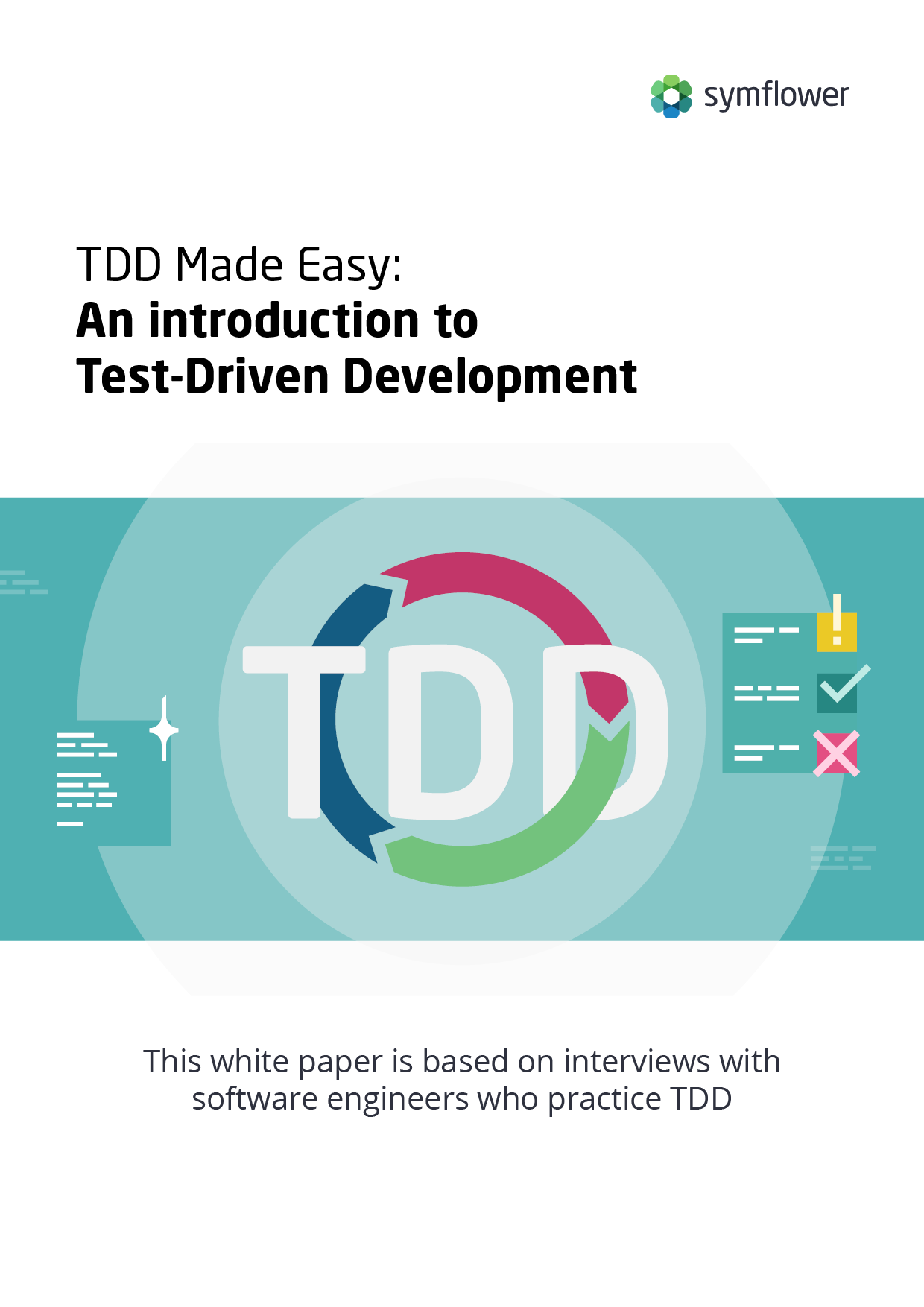Test-Driven Development (TDD) is gaining traction in the industry. This blog post introduces our white paper which helps you and your team get familiar with TDD. The post also mentions some of the key benefits, challenges, and best practices for the successful adoption of Test-Driven Development that the white paper provides more details on.
As an incremental and iterative approach to software development, TDD works well in an Agile environment and offers a range of benefits compared to traditional development including, among others: high code quality, accelerated development, and improved collaboration. Yet that’s not the whole story: practitioners will admit there are some challenges that add to TDD’s learning curve. Certain best practices can be very helpful in getting productive with TDD fast. We’ve interviewed software experts that work with TDD to get their insights on adopting the methodology. The findings have served as input for our white paper on Test-Driven Development.
Download the white paper:

What is Test-Driven Development?
Let’s tackle the basics first. In short, TDD is a methodology that uses tests to specify (and of course to validate) what the software component being developed should do. Best understood as a specification technique, TDD applies a test-first approach, with its Red/Green/Refactor cycle helping you deliver high-quality, functioning code that is adequately covered by test cases.
When writing new code for an application, you’ll start out by creating the test cases that define software behavior. These tests in the Red phase will of course fail, since there’s no code yet. You will then write just enough code to pass those test cases (Green phase). You’ll validate the application’s behavior by running all existing tests. If all tests have passed, it’s time for you to clean your code (Refactor phase), running all tests after each refactor. To add new functionality, you will then just repeat, creating new tests and writing new code using the same process.

The difference between traditional development vs Test-Driven Development is very apparent. In traditional development, testing is the last thing you do – and if we’re honest, it’s not always front and center in terms of priority either. A failing test there means you need to go back and rewrite what you had considered done.
TDD flips that thinking altogether, forcing you to think first about what exactly it is you are building. You’ll build test cases around those requirements, and then you’ll deliver the code that does just that. A failing test here is what drives development forward – it’s a natural starting point for you to start building software in increments.
Why use TDD in your projects?
Based on our interviews with software developers from a number of companies, we identified a variety of benefits that practitioners experience with Test-Driven Development, including:
- Better code quality due to testability and high test coverage
- A more modular and flexible solution design enabled by TDD’s iterative and incremental test-first approach
- Accelerated development by avoiding writing unnecessary code and through faster feedback cycles
- Improved collaboration and communication, simplified documentation: code written with TDD is easy to navigate and tests help understand what the application should do, making teamwork easier
- Better testability, code maintenance, and reuse by writing clean, readable, and easy-to-manage code
- More convenient APIs as they are tested on the fly, letting the developer identify suboptimal design choices as soon as possible.
However, our interviewees also agreed that adopting TDD can be a bit of a challenge if you’re used to traditional development and especially if you’re working on legacy code.
The challenges of TDD adoption
Most developers that have experience with this methodology warn about the learning curve of Test-Driven Development. While this initial investment of time and effort balances out in the long run, it’s worth considering this if you’re about to adopt TDD with a new project that has hard deadlines.
It’s usually not a good idea to learn TDD in a large and messy legacy production code base. A carefully managed transition generally starts with a new project rather than an existing application. If you do have to go the latter way, aim for adding high-level testability before adding new features.

Another challenge of TDD is that it can be hard to enforce the right processes: it’s quite easy to slip back into the old habit of writing code first. When transitioning a team to a new TDD-based way of development, set clear guidelines and have proper processes in place to practice regularly, exercise pair programming, and use established best practices.
Our interviews with developers from a variety of companies resulted in a few key best practices that you can use to ensure that your TDD journey is a successful one. We’re listing these below to give you an idea – for more details, download our white paper below:
- Test with purpose
- Keep tests small and write minimal assertions
- Follow best practices on naming conventions
- Keep order in your implementation and testing code
- Use mocks to isolate and focus on small units of functionality
- Execute high-level testing rather than just unit tests
- Minimize the time you spend in the Red phase
- Rely on test coverage tools
- Re-check your tests religiously
To find out more about TDD, whether it’s the right approach for your project, and to learn the most important best practices that help ensure success, download our white paper.